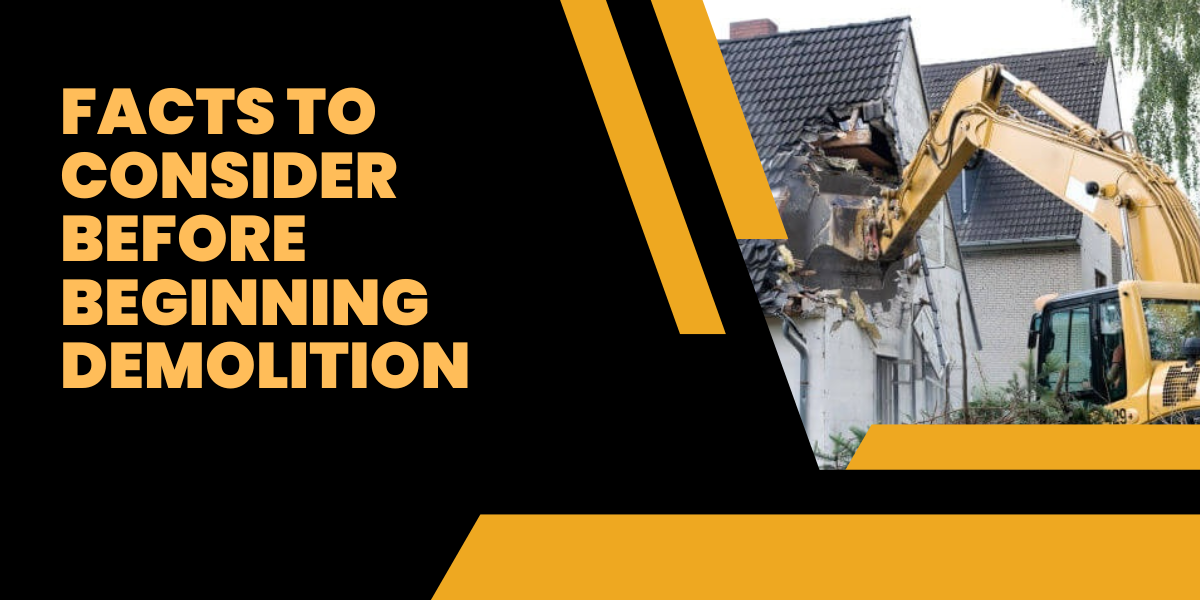A house demolition project can be scary. With some planning, it doesn’t have to be difficult, so don’t let the clutter and risk deter you. Here are some professional advice to make sure your demolition in Melbourne project runs smoothly:
1. Get a Permit
Considering demolishing a structure? Make sure you have the proper permit before you swing that hammer. It will ensure adherence to local laws and be crucial for safety and environmental reasons. Pay close attention to potential dangers, such as falling objects, unstable buildings, improper use of heavy equipment, and the improper handling of dangerous substances, which can all put workers at risk.
2. Contact Experts
When taking on a large endeavour, don’t undertake it alone. Many highly qualified individuals are available to ensure your project is done correctly. According to top demolition companies, conducting research and selecting a qualified contractor can make all the difference in assuring success. Review their references from previous customers, their portfolio, and the other asbestos removal contractors they have collaborated with. Don’t forget about insurance either; for everyone’s financial security, no matter what transpires in the future, ensure that any professional hired for this type of work has current licences and bonding agreements as necessary.
3. Remove Hazardous Materials
Taking on a demolition job is thrilling, but it’s important to confirm the building is free of hazardous chemicals first. Your best bet is to contact a professional for testing services because toxins like asbestos, lead paint, and other hazards can be dangerous if not handled appropriately. Once you’ve determined that all hazardous materials have been safely removed or controlled, it’s time to begin going. You might want to consider hiring someone specialising in environmental remediation, has experience removing asbestos from buildings, and has researched techniques safe enough for do-it-yourself operations, depending on the task scope involved.
4. Tree Removal Permits
Verify the rules and regulations your local government sets before you begin making plans for any tree removal. In the long run, everything is arranged upfront because many locations demand permits or even an arborist evaluation before providing approval. The Tree Expert, a Mackay-based provider of tree removal and lopping services, claims that obtaining a permit before beginning any project will help avoid consequences like fines from the local government, potential jail time if someone is hurt during removal while they shouldn’t be there (like children playing nearby), or even having all future construction plans rejected due to this one error. Obtaining those permits in advance is worthwhile to prevent incidents of this nature from occurring in the future.
5. Select The Right Tool
Before starting any demolition in Melbourne project, providing oneself with the necessary equipment is crucial. When tackling bigger chores, take safety precautions like masks or gloves. It includes being aware of the things that need to be removed and their weight, as well as the presence of any dangerous materials.
Ask someone who does before continuing with the demolition if you are unsure of the type of material being removed from behind that wall or ceiling panel or even if it is safe. It’s crucial to understand the dangers involved in the activity at hand and what kind(s) of tools and equipment will work best for it (e.g., a chisel versus a hammer). You should also mentally prepare for the worst-case situations, where things could happen suddenly and without notice.
6. Learn Where to Store Debris
The first step in ensuring your demolition job runs smoothly is hiring or buying dumpsters to store debris. There is no need to deal with everything at once; instead, choose several smaller items that may be delivered sequentially over the workweek to save time and energy. Before putting any dumpster on a landowner’s or tenant’s property, be sure you have their permission.
7. Look at Your Budget
The first step in ensuring your demolition job runs smoothly is hiring or buying dumpsters to store debris. There is no need to deal with everything at once; instead, choose several smaller items that may be delivered sequentially over the workweek to save time and energy. Before putting any dumpster on a landowner’s or tenant’s property, be sure you have their permission.
8. Examining The Building
For several reasons, a building survey must be finished before demolition in Melbourne. The entire structure is assessed, ensuring a risk-free and efficient destruction.
Hazardous substances like asbestos and lead must be regulated and disposed of to lower health risks. Additionally, surveys may discover cultural or historical significance, allowing for documentation or preservation before demolition.
Employ a knowledgeable and professional asbestos removal contractor to analyse the building’s structural integrity, identify potential hazards, and determine the best corrective action for demolition. The surveyor will visually inspect the building, searching for any exterior or interior evidence of deterioration or damage and analysing architectural plans and documents to comprehend the building’s architecture fully.
Contact Merhi Group for The Best Demolition Solutions
These eight crucial elements must be carefully considered before starting a demolition job. Each step is critical to the success and legality of your project, from obtaining the required permits and completing rigorous inspections to ensuring that waste is disposed of properly and prioritising safety procedures. The effective disposal of structures, as well as the safety of workers, the environment, and the community, are all guaranteed by the complicated and meticulously planned process of demolition. You may confidently navigate your demolition project, reduce risks, and achieve your intended goals quickly and responsibly by taking care of these important factors upfront.

